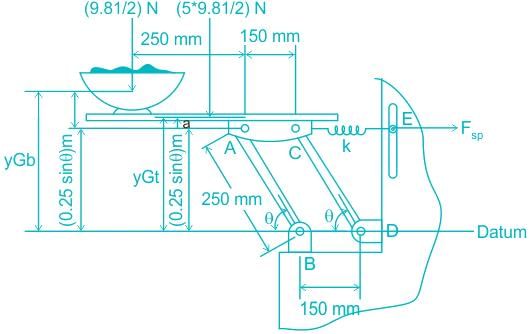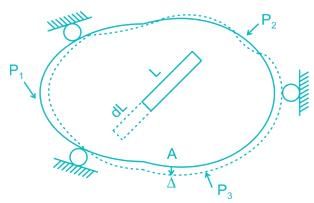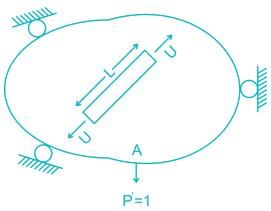Test: Principle of Virtual Work - Civil Engineering (CE) MCQ
10 Questions MCQ Test - Test: Principle of Virtual Work
A 5 kg uniform serving table is supported on each side by two pairs of identical links, AB and CD, and springs CE. If the bowl has a mass of 1 kg and is in equilibrium when θ = 45°, determine the stiffness k of each spring. The springs are upstretched when θ = 90°. Neglect the mass of the links.


In virtual work Principle, the work done by self weight of the body is taken into consideration, when
Who founded the principle of virtual displacement?
A system of connected rigid bodies is in equilibrium, provided the virtual work done by all the external forces and couples acting on the system is _______ for each independent virtual displacement of the system.
If a system is in equilibrium and the position of the system depends upon many independent variables, the principle of virtual work states that the partial derivatives of its total potential energy with respect to each of the independent variable must be
The principle of virtual work states that, for a body to be in equilibrium, the virtual work should be:
The principle of virtual work can be applied to elastic system by considering the virtual work of
Who founded the principle of virtual displacement?






 and Fsp = 0.25kcosθ N and all other values in equation (iv), then we have
and Fsp = 0.25kcosθ N and all other values in equation (iv), then we have


















